Do you want to get your ferret a ferret leash and harness?
Are ferret collars safe for ferrets?
Keeping ferrets under control sometimes requires a ferret harness and a leash so today, I will share with you some information about them. Which ferret lead and harness design is the best one, should you get a small ferret harness, medium, big, or even extra small option, should you use ferret collar and lead or that combination isn’t that safe. So, let’s start our harness, leash, and collar post!
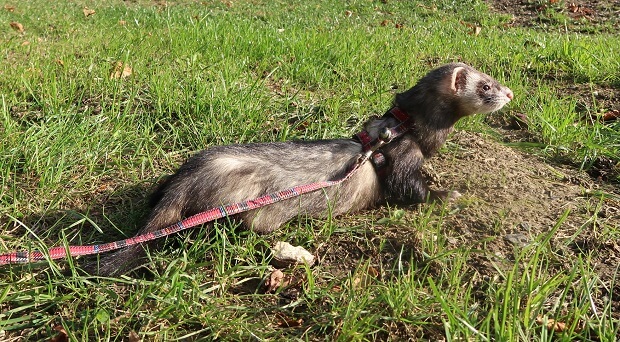
TABLE OF CONTENTS
What Ferret Harness Design To Pick?
When you are looking for a ferret harness, you know that there is more than one design on the market. There are three main designs, they are basic harness design, ferret vest harness, and ferret figure 8 harness. What makes those two designs similar is the fact that both of them go around ferrets’ bodies. That way a ferret will have a hard time escaping the harness. So, let’s take a look at each one in-depth.
Basic Ferret H-Style Harness Design
A basic harness design is the one you can find on cats and dogs too. It is usually made of nylon and it goes around the ferret’s head and the ferret’s body so the front legs are right in the middle of the harness. It is the most common design so you can find it in almost every pet store. A good thing is that you can use a kitten harness for ferrets too.
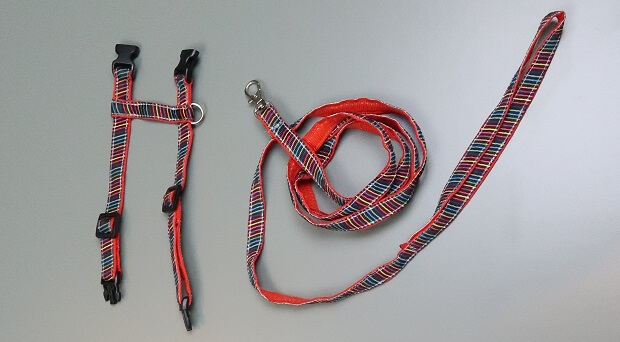
The bad thing is that it has to be for kittens, not for cats since those are too big. Also, you have to be able to adjust the size of the harness. If you find this type of harness, make sure you get the smallest kitten size so you can use it as an extra small ferret harness.
Ferret Vest Harness
This design looks like an upgraded H-style harness because it comes with a vest. The vest is mostly made of breathable mesh material so it won’t bother your ferret too much and it doesn’t come too close to the ferret’s neck.
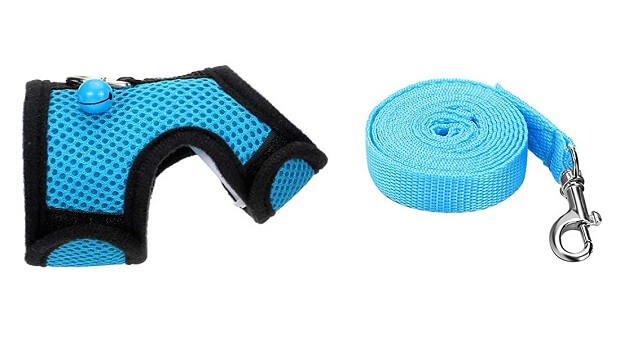
The problem with the ferret vest harness can be in the bottom where you have to tie the vest. Most of them come with velcro and ferrets usually find a way to open up the velcro. So, if you are interested in the vest design, I recommend getting one with snap-lock buckles, not the velcro.
Ferret Figure 8 Harness
The figure 8 ferret harness is the last design you can choose from and it is the rarest one. It comes in a very simple design, it mostly consists of one or two strings connected together with a sliding button so you can adjust the size to your ferret.
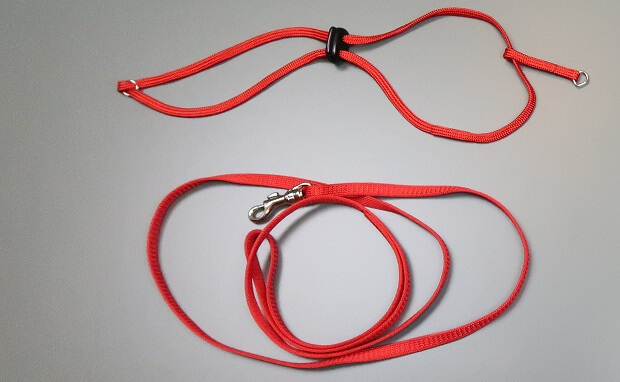
Although the figure-8 harness for ferrets looks different, it has the same working principle, meaning it goes around the neck and the front legs are in the middle between both strings. This is actually a very popular harness for rats, hamsters, and other small animals so you might find it in the small animal department of your pet store if they have it in offer.
Choose Harness With Buckles
A smart idea is to get a harness that comes with buckles because buckles last longer than velcro. Velcro can’t keep a ferret in check, there is something about it that ferrets make go wild so most of them can escape after a short time.
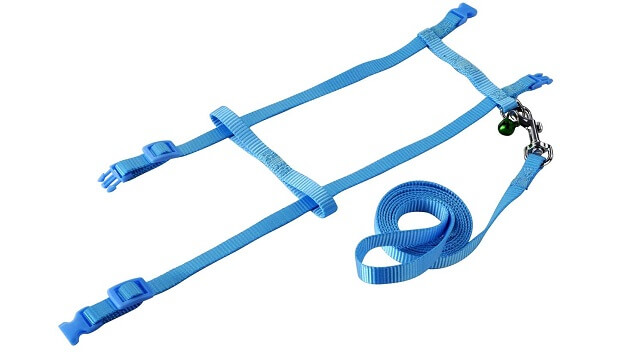
It is probably the fact that they can open it if they are stubborn enough. Also, velcro can get dirty with dust, sand, and other particles which will eventually lead to bad performance.
What Ferret Leash To Pick?
The leash is another part of the equipment you have to choose and the question is again, what types are there? Well, this part is much easier since 99% of harnesses come with matching leashes that are usually pretty good. There are two types you can choose from. As you can assume, those types are regular leash and retractable leash. So, let’s see which one is better and why.
Regular Ferret Leash
A regular ferret leash is the one that usually comes with a harness in the package. It is a simple leash that comes in a certain length. That means you can’t make it shorter or longer. One end comes with a clip you use to attach the harness to the leash.
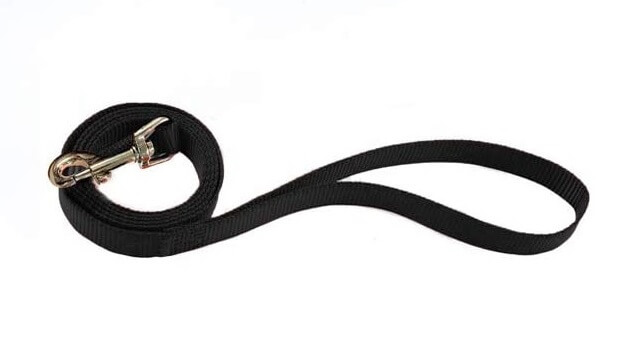
The other end can have a loop for your hand or it can have another clip so you can make the loop yourself. I prefer the ones with the clip on the loop so you can tie the leash around a pole, branch, leg of the bench, etc.
Retractable Ferret Leash
Unfortunately, there is no such thing as a retractable ferret leash, but there are ones made for dogs and people usually use those. They are big, have a big range and they are actually pretty strong. That is logical since they are made for dogs, not ferrets or other small animals.
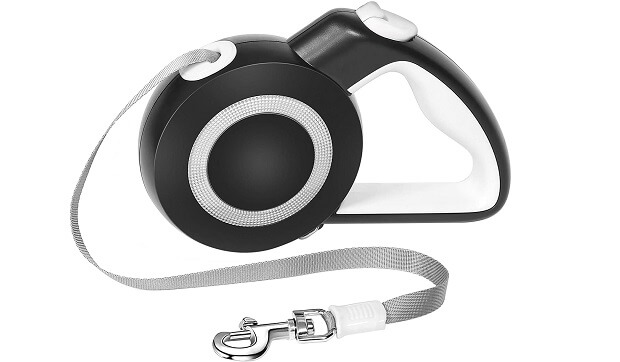
What I don’t like about retractable leashes is that they can be rather strong so if you activate it with a ferret on it, you might give your ferret an intentional push. I am sure you can’t actually harm your ferret, but you might annoy him. Also, if something happens, you can’t react as quickly as you could with a regular leash.
What About Ferret Collars?
Ferret collars aren’t on the top of the must-have ferret equipment. Actually, they aren’t even on the bottom of the list because they aren’t recommended. Ferret collars aren’t safe for ferrets for many reasons, but I will mention only a few.
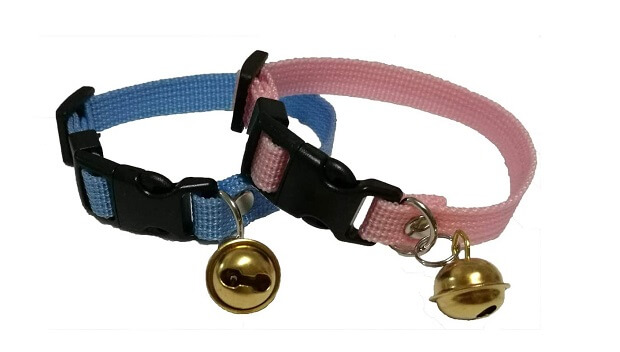
Ferret Will Remove The Collar
If you put a collar on the ferret and he doesn’t like it, you can be sure that the collar will come off in under a minute. Ferrets are flexible and they can go into tight spaces, which means that they can take off things around their neck easily. That is why a harness is the best choice. When you put a harness around the neck and around the front legs, you are preventing your ferret from removing it.
Ferret Can Get Stuck With A Collar
If for some reason your ferret doesn’t mind the collar, he will act like the collar doesn’t exist. That means he will go on exploring, playing, and jumping around like any other day. The problem is if he starts going through narrow spaces like under the couch or behind the bookshelf. The problem is that there is no room in tight places for a collar and your ferret might get stuck by that same collar somewhere where you can’t reach him that easily.
Collar Can Injure Your Ferret
I know that this sounds a little extreme, but it has happened. The most common injury includes a ferret’s paw, a collar, and panic mode. It happens something like this: a ferret doesn’t like the collar and he wants to remove it. He tries with his paw and his paw gets stuck between the collar and his neck. Ferret enters a panic mode and starts jumping around because he wants to break free. That way he can injure his paw, his entire front leg, he can fall or run into a wall, desk, sofa, etc. It might sound funny, but I can assure you, there is nothing entertaining about this situation.
Ferret Harness & Leash Training Guide
Not every ferret loves the idea to have something wrapped around him so it is your task to gradually train your ferret to use the leash. Like every training, you will have to have rewards and patience when it comes to leash walking. But, first, you have to find a harness that fits your ferret, doesn’t choke him, and doesn’t fall down. You will have to make sure the ferret is comfortable with it.
Step 1: Put The Ferret Harness On
The first thing you have to do once you’ve found the harness is to put it on the ferret. Watch his behavior. If he doesn’t mind the harness, then you are done! But, if he tries to get it off, make sure it is not too tight around his body. You should be able to place your pinkie between a harness and the ferret. If you have trouble with the harness then use treats. Give your ferret treats while you are putting the harness on. That way he will connect the harness with the treats.
Step 2: Leave The Harness On
Once you have put the harness on the ferret, leave it on and observe your ferret. Give him time to get used to the feeling of the harness. If he is struggling, put on the harness for a short time then remove it. Put it on each day and gradually prolong the time spend with the harness. Reward the good behavior with his favorite treats. Most ferrets don’t mind having a harness on them or they get used to it pretty quickly.
Step 3: Include the Leash
Now that the harness is on the ferret, you have to include the leash too. The best way to do that is to put the leash on the harness and let it be. Don’t hold the leash and let your ferret explore the leash and surroundings. Make sure you monitor your ferret at all times because a loose leash can tangle around the ferret. If your ferret doesn’t react to the leash, then you can leave it there for a couple of minutes. If your ferret doesn’t like the leash, take it off and gradually prolong the time with the leash, just like you did with the harness. Also, reward your ferret with treats when you put it on the leash so he can connect the leash to something positive – treats.
Step 4: Grab The Ferret Leash
It is time for you to grab the leash and walk with your ferret. Do everything inside so you can practice without traffic and other loud noises. Your home is your ferret’s safe place and he is comfortable there. So, grab the leash and let your ferret lead the way. Every once in a while gently pull the leash and observe your ferret’s behavior. Try to steer your ferret with the leash. Pull him gently in the left if he starts going right. Give him treats each time he followed your orders.
Step 5: Go Outside
By now your ferret should know what a leash and harness are, what it means when you gently pull him so it is time to go outside. The first walk should be in some quiet place without too many distractions and keep it short. After a few days you can make each walk longer, but don’t go more than 15 minutes, your ferret will get tired.
Go With Your Ferret For A Walk
Now that you know how to train your ferret to walk with a leash and you know how to pick a ferret harness and leash, you are ready for a walk! Just make sure you have put good medicine against fleas on your ferret and make sure to take food and water on a walk with you. Don’t go on a walk on a too-hot summer day, ferrets are prone to heatstrokes. You can read more about ferret heatstrokes in my post here.
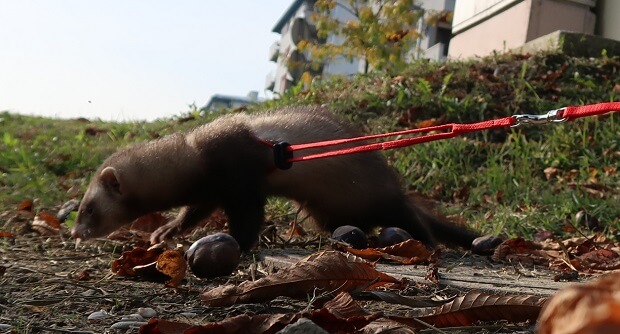
Conclusion
Although ferrets are indoor animals, it is smart to teach them about harnesses and leash so you can take them out from time to time. The most important thing you need to know about the ferret harness is that your ferret shouldn’t take it off and you mustn’t leave your ferret unsupervised. Keep the walks short because your ferret might get bored soon. It is probably because they can’t run around with that leash holding him back! Do you take your ferret on walks? Share your ferret harness and leash adventures with us in the comments!


















Leave a Reply